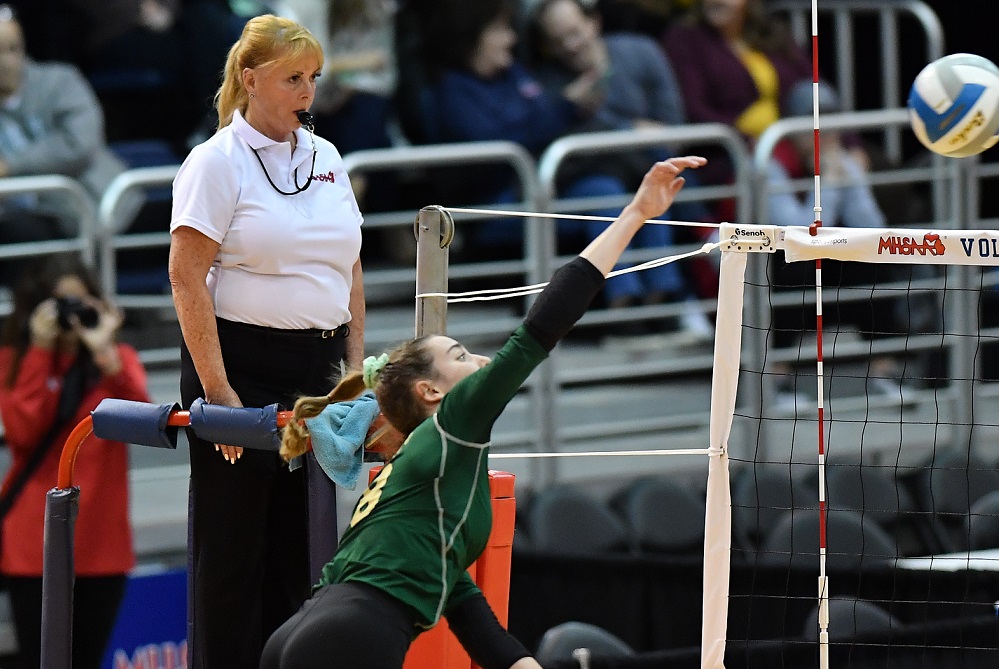
Be the Referee: Volleyball Obstruction
By
Brent Rice
MHSAA Assistant Director
September 23, 2021
Be The Referee is a series of short messages designed to help educate people on the rules of different sports, to help them better understand the art of officiating, and to recruit officials.
Below is this week's segment – Volleyball Obstruction - Listen
Ever wonder why in volleyball some balls hit into obstructions remain in play, while others are replayed, and some end the rally?
If a ball hits an obstruction over a playable area during a rally, and then is played by the same team, it has the same status as any other hit. However, that isn’t the case in all other instances.
If the ball hitting the wall or an object attached flush to the wall doesn’t actually interfere with a player’s legitimate effort to play the ball, the ball is dead and a loss of rally and point shall be awarded. If it does interfere with the playing of the ball, a replay is declared if the wall is less than six feet from the boundary.
If the ball hits a suspended backboard over the playable area, a replay will be declared as long as the referee believes the ball would have remained in play. Serves that hit any obstruction are a loss of rally and point.
Previous editions
Sept. 16: Catch or No Catch - Listen
Sept. 9: Intentional Grounding – Listen
Sept. 2: Pass Interference – Listen
Aug. 26: Protocols and Mechanics – Listen

Be the Referee: Clocking From Shotgun
September 24, 2020
This week, MHSAA Assistant Director Brent Rice explains a change in football that gives teams another way to stop the clock while on offense.
Be The Referee is a series of short messages designed to help educate people on the rules of different sports, to help them better understand the art of officiating, and to recruit officials.
Below is this week's segment - Clocking the Ball from the Shotgun - Listen
One of the other visible rules changes taking place this year in football pertains to the quarterback spiking the ball into the ground after receiving the snap from center in an attempt to stop the clock.
Previously, clocking the ball in an effort to preserve time could only be done from a traditional hand-to-hand snap from the center to the quarterback – which actually worked to the disadvantage of teams which run shotgun formations all the time.
The rules change allows the quarterback from a shotgun formation to immediately spike the ball into the ground after receiving it to stop the clock with an incomplete pass, bringing the high school rule in line with the college and professional rules.

